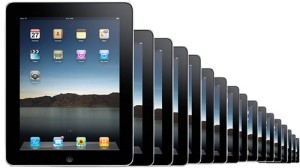The market share of Apple’s iPad fell dramatically in China during the second quarter as a result of competition from Android tablets made by little-known “white box” vendors. 
The iPad has historically dominated China’s tablet market, with usually over a 50 percent share. But in this year’s second quarter, iPad shipments to the country made up only 28 percent of the Chinese tablet market, research firm IDC said on Tuesday.
The iPad still led the market with 1.5 million units shipped to China. But the figure was down from the 3 million units shipped in the previous quarter, IDC analyst Dickie Chang said.
The decline in shipments is probably the result of Apple reducing iPad inventory in preparation for its next generation tablets, Chang said. New versions of the 10-inch iPad and 8-inch iPad mini could come later this year, he added.
Trailing behind Apple in China’s tablet space was Samsung, with 11 percent share, and Lenovo, which had 8 percent share. Both Samsung and Lenovo saw increases in their Android tablet shipments. But there was also strong demand for low-priced Android tablets from largely unknown white box vendors.
“The consumers are becoming more familiar with the tablet product,” Chang said. “They can use Android tablets from Samsung, Lenovo, or others from small white box vendor guys because the price is cheap.”
Some of these Android tablets, like those from Chinese vendor Onda, can start as low as 699 yuan (US$113), and come built with a quad-core processor, 8-inch screen, and 5-megapixel camera.
During the quarter, 46 percent of all tablet shipments to China came from vendors IDC classified as “others”, which individually claimed a market share of less than one percent. Many of these vendors included small white box device makers, as well as Amazon, which began selling its Kindle Fire tablet in China in June.
One vendor that didn’t fare as well in the market was Microsoft, which is selling both its Surface RT and Surface Pro tablets in the country. The company had less than 1 percent market share from 37,000 units shipped. Most of the units sold were of its Surface RT product, Chang said.
“The Surface Pro has been too expensive,” he added. “For that price, the consumer or commercial buyer expects the ultimate in user experience, but somehow the performance or the pricing of it has been the bottleneck for sales of the Surface Pro.” The Surface Pro starts at $939 in China.





